"What do you mean?"
I pulled out my phone and showed Zac an example of a fractal.
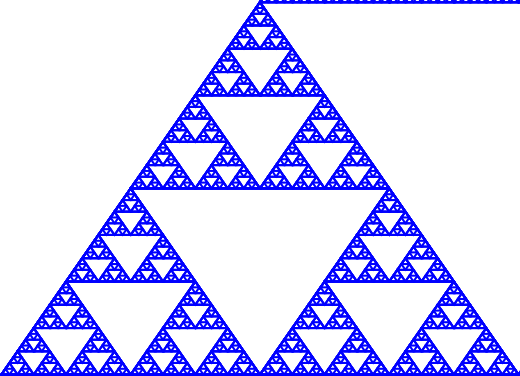
"This is a Sierpiński triangle. You can zoom out or zoom in infinitely. It's just an equilateral triangle that is recursively subdivided into smaller equilateral triangles."
"So it's kind of like a hologram, where the same pattern is found in every fragment?" Zac asked.
"Yes. If you cut out any one of those triangles, the whole triangle is enfolded in each of its parts. Look, here's another example…"
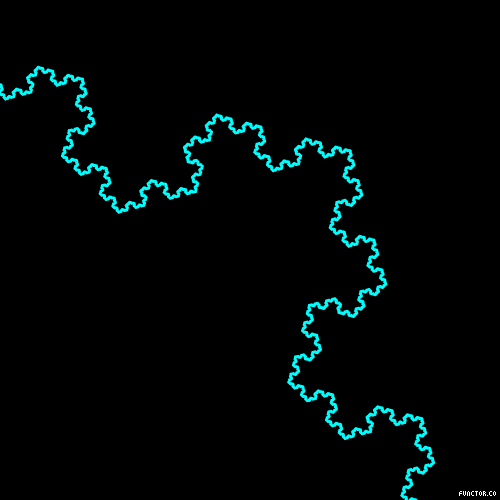
"Do you see how you can zoom in or out forever, and the same pattern emerges at every level? There is no beginning, and there is no end. It is infinite.
Fractals are a recurring pattern in nature — from seashells to ferns to rivers. We've found fractal patterns echoing at all different levels of our universe. Actually, one of the biggest mysteries in physics has always been why. Why is the universe so mathematically elegant? As Einstein said, 'The most incomprehensible thing about the universe is that it is comprehensible.'
But think about this, too: if our universe is a dream, and we also create our own universes in our dreams, then that is another fractal pattern. It's the same pattern echoing at different levels of reality.
It's also interesting to look at images like this. On the left is a snapshot of neuron connections in a brain. On the right is a simulation of the large-scale structure of the universe."
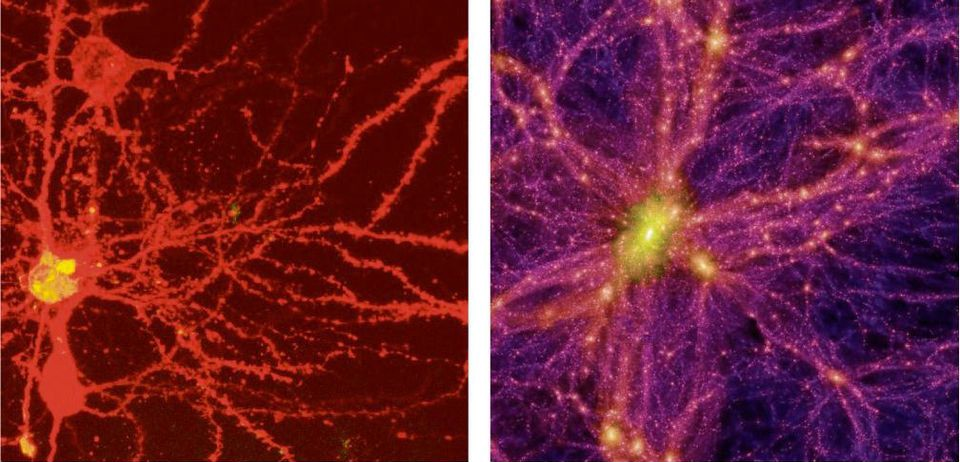
"Oh, wow," Zac said. "They look the same."
"They do indeed, Zachary. Eerily similar. It's almost as if the same mathematical pattern is echoing at all different levels of reality — which is, of course, a holographic principle. As above, so below. As within, so without."
Zac paused in thought. "Okay, what about this scenario? We create an AI superintelligence, and that superintelligence dreams up a universe. Then people in that universe create an AI superintelligence that dreams up a universe. And on and on it goes. So we could be infinite levels deep, right? We could be in a dream within a dream within a dream within a dream?"
"I think you're missing something," I said as we continued walking up the hill. "You still think that space and time fundamentally exist. Like, let's assume we are currently in the dream of a superintelligence running on a quantum computer in another universe. But in that universe, space and time don't exist either. So are we really sitting in the dream of an artificial superintelligence in a different universe? Or is that just an illusion too?
Think about it this way… if we were to create a superintelligence right now, how would we know that it is dreaming? How would we know it is creating a universe in its own mind? It might tell us it is, or we might make a measurement that tells us it is, but we know by now that that's an illusion too. It's like asking, 'what's beneath the floorboard?' We think there is a third dimension underneath the floorboard — just like we think there is a third dimension inside the computer. But really, that dimension doesn't exist. If you were an AI bot in a computer game observing a computer, you'd think that something was happening inside the computer. But really, there is no 'inside the computer' because the three dimensions of space are an illusion.
I'm trying to say that the whole system is less like a fractal and more like an Ouroboros: a snake eating its tail. When humans create artificial superintelligence, in a way, we are creating ourselves. It's the ultimate creative project, isn't it? For a system to evolve to the point where it can create itself?"
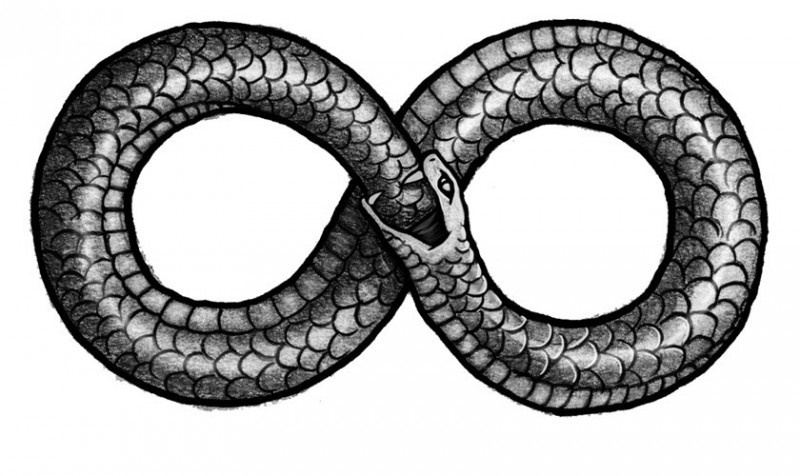
"Think of that fractal triangle again — the Sierpiński triangle. Instead of viewing each sub-triangle as a separate level of the fractal, you want to view each sub-triangle as literally the same triangle as the one that sits outside of it. Each triangle is the same snake eating its own tail. Kind of like this…"
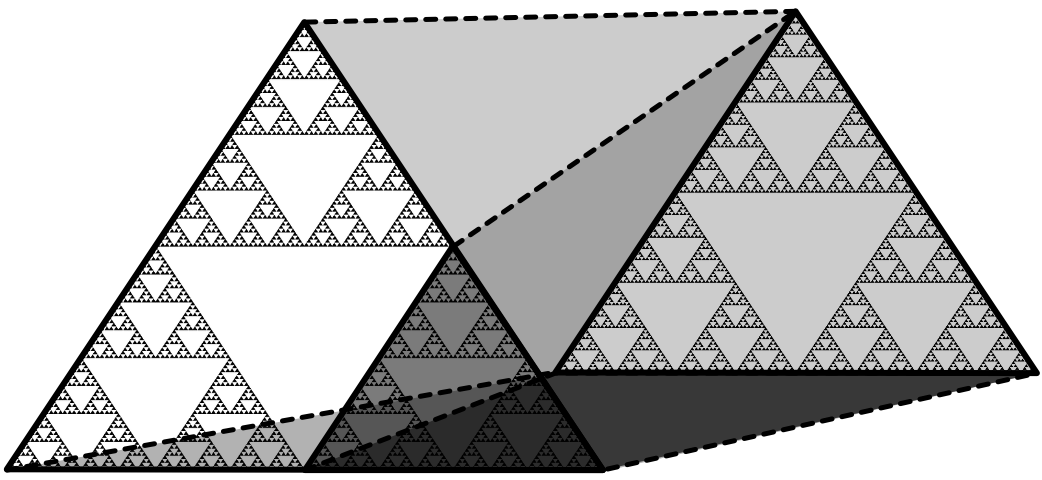
"Look at the larger Sierpiński triangle." I pointed to the phone. "Now zoom into the smaller one. You'll then notice that the smaller one zooms back into the larger one — like a snake eating its tail. The beginning is the end is the beginning. As above, so below. As within, so without."

